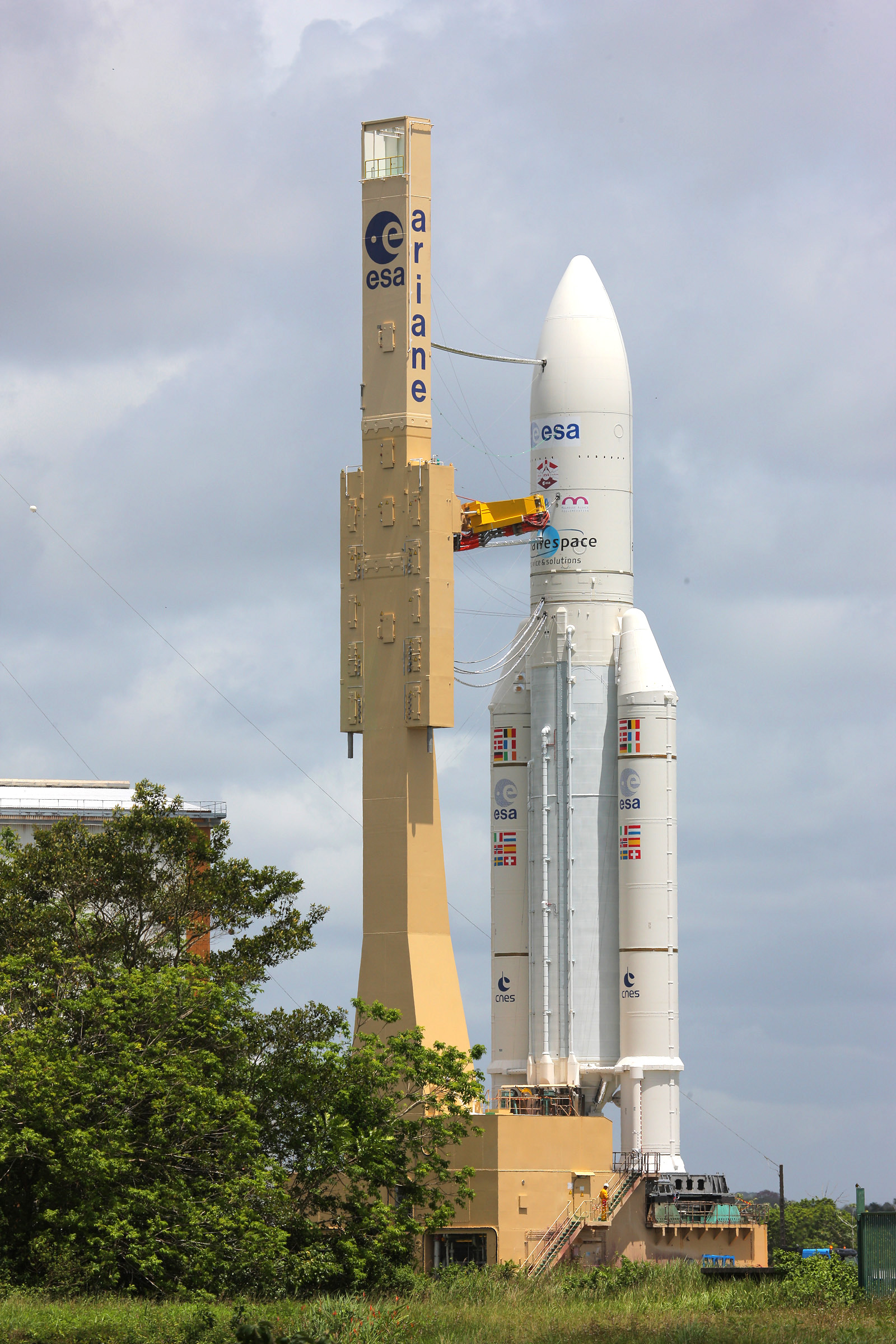Ariane 5

Ariane 5ES with ATV 4 on its way to ELA-3 . Photo Credit : DLR German Aerospace Center photostream. https://www.flickr.com/photos/48213136@N06/8958839420.
Ariane 5 is a European heavy-lift space launch vehicle developed and operated by Arianespace for the European Space Agency (ESA).
Quick Facts About Ariane 5 ECA.
- Type : Orbital heavy-lift launch vehicle.
- Origin : 20 ESA member states.
- Manufacturer: Airbus Defence and Space for ESA.
- In service : 11 December 2002 - Active(ECA variant).
- Mass : 777,000 kg (1,713,000 lb).
- Length/Height : 46–52 m (151–171 ft).
- Diameter : 5.4 m (18 ft).
- Payload to LEO : over 20,000 kg (44,000 lb).
- Payload to GTO : 10,865 kg (23,953 lb).
- Propellant: Boosters: AP, Aluminium, HTPB. First stage: MMH / N2O4. Second stage: LH2 / LOX.
- Engines: Boosters: 2 x EAP P241 with thrust of 14,160 kN (3,180,000 lbf). First stage: 1 x Vulcain 2 with thrust of 1,390 kN (310,000 lbf) (vacuum). Second stage : 1 x HM7B with thrust of 67 kN (15,000 lbf).
It has been used to deliver payloads into geostationary transfer orbit (GTO) or low Earth orbit (LEO). The rocket had a streak of 82 consecutive successful launches between 9 April 2003 and 12 December 2017. A direct successor system, Ariane 6, is in development.
The system was originally designed as an expendable launch system by the Centre national d'études spatiales (CNES), the French government's space agency, in close cooperation with Germany and other European partners. Despite not being a direct derivative of its predecessor rocket program, it is classified as part of the Ariane rocket family. Airbus Defence and Space is the prime contractor for the vehicles, leading a multi-country consortium of other European contractors. ESA originally designed Ariane 5 to launch the Hermes spaceplane, and thus it is rated for human space launches.
Since its first launch, Ariane 5 has been refined in successive versions: "G", "G+", "GS", "ECA", and most recently, "ES". The system has a commonly used dual-launch capability, where up to two large geostationary belt communication satellites can be mounted using a SYLDA (Système de Lancement Double Ariane, "Ariane Double-Launch System") carrier system. Up to three, somewhat smaller, main satellites are possible depending on size using SPELTRA (Structure Porteuse Externe Lancement Triple Ariane, "Ariane Triple-Launch External Carrier Structure"). Up to eight secondary payloads, usually small experiment packages or minisatellites, can be carried with an ASAP (Ariane Structure for Auxiliary Payloads) platform.
After the launch of 15 August 2020, Arianespace has already signed the contracts for the last eight Ariane 5 launches, left to launch before the transition to the new Ariane 6 launcher, according to Daniel Neuenschwander, director of space transportation at the ESA.
Credit/References and for further info please see:
https://en.wikipedia.org/wiki/Ariane_5

Belgian components for the Ariane 5 rocket. Photo Credit : Isai Symens.via Wikimedia Commons.